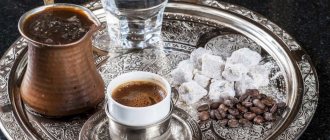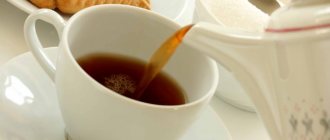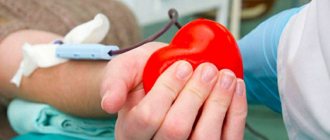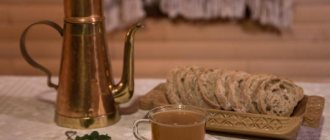How does coffee affect enamel?
If you doubt whether coffee makes teeth yellow, look at the structure of the tooth. The enamel has pores where microparticles of coffee grounds penetrate. Because of this, dark spots appear. But some people have a smooth surface on their teeth. No staining deposits settle on their enamel and they can drink their favorite drink without harm.
Plaque on teeth from coffee is not only an external problem. As it accumulates, it begins to harden and turns into tartar. And this already leads to the appearance of periodontitis.
How to prevent coffee stains
It is easier to prevent the appearance of coffee stains than to get rid of them later. Prevention and simple precautions will help you preserve your snow-white smile:
- Do not drink coffee that is too hot. High temperatures not only damage tooth enamel, but are also harmful to the digestive tract.
- Do not prolong the process of enjoying an invigorating drink; the sooner you drink it, the less staining substances will settle on the tooth enamel.
- A good way to avoid contact of dyes with tooth enamel is to drink drinks with dye pigments through a straw. Although this method may seem unusual at first, it will allow you to drink coffee slowly and fully enjoy the process.
- Reduce the amount of sugar added to the drink, and preferably drink it unsweetened. Excess sugar on the teeth is retained in the form of a film in which Streptococcus mutans begins to actively multiply.
- Don't drink coffee with ice cream. As a result of sudden temperature changes, microcracks form and the enamel is destroyed.
- Choose coffee with less caffeine. The method of brewing also matters: a drink prepared in a coffee machine contains less caffeine than one brewed in a Turk or French press.
- Clean your mouth and teeth after eating with dental floss and special rinses.
- After drinking a cup of coffee or other liquid, rinse your mouth with warm water.
Please note that instant drink contains a larger amount of active elements that have a negative effect on tooth enamel. It is enriched with them as a result of repeated processing, which is provided for by the technological process. Therefore, give preference to a natural product.
There is no clear answer to the question of whether coffee with milk or cream causes teeth to turn yellow. On the one hand, adding milk or cream somewhat smoothes out the effect of the coloring pigments of black coffee and reduces their concentration. On the other hand, milk, like sugar, causes the appearance of bacteria.
We suggest you read: Why does a wisdom tooth hurt when it grows?
Causes of yellowness
Naturally, a small amount of coffee drink is not harmful to teeth. Natural dye is only dangerous for people who use it regularly.
In addition to the dye, the formation of stains after coffee drinks is affected by:
- Temperature. Drinking coffee hot is harmful. The pores expand and the coloring matter easily penetrates the enamel. The spots appear faster.
- Destructive acids that make up Arabica. There are more of them in this variety than in Robusta. Therefore, Arabica beans make teeth darken faster.
- Contrasting temperatures increase the risk of yellow discoloration. Therefore, in cold weather, do not drink coffee outdoors. And even more so in the cold. It is better to refuse a cocktail made from coffee with ice cream. This combination quickly destroys the tooth surface and makes it easier for the coloring matter to seep inside.
- Food residues on the teeth absorb and retain coffee particles. It turns out like a coloring lotion. If you don't take care of your mouth and don't brush your teeth well, they will turn yellow or dark.
As you can see, there are many reasons for yellowing. Coffee lovers should be more careful about hygiene.
Can tint appear due to coffee with milk?
Some people add milk to the smoothie and believe that this way they reduce the effect of coffee on tooth enamel. There is a grain of truth in this.
Scientists conducted an experiment. They placed the extracted teeth in two containers. One had black espresso, the other coffee with milk. In black coffee, the tooth darkened, but in a drink without milk, the color did not change. This means that milk neutralizes the harmful effects of the dye.
But the ratio of components also affects. Too strong coffee with milk in small quantities harms your teeth more than a weak drink without milk.
Another reason to add milk is calcium, which is necessary for the strength of the tooth surface. The lack of substance also affects the appearance of the shade. Therefore, it is better for coffee lovers to choose between latte and cappuccino, and not overuse espresso.
What is more harmful: coffee or tea?
There is an opinion that tea is less harmful than a coffee cocktail. In fact, both drinks contain about the same amount of caffeine. This is discussed in detail in the article “Where is there actually more caffeine: in coffee or tea? Let's count."
From this we can conclude that the coloring effect of coffee and tea will be the same. The latter will also intensify if, after drinking, you rinse your mouth with preparations containing chlorhexidine.
Why do coffee and tea make teeth yellow?
The color of a person’s teeth is influenced by the condition of his tooth enamel: the thicker and stronger it is, the less susceptible the tooth is to staining. In the mouth of each of us there live many microbes that process leftover food and at the same time release acid, which gradually eats away the enamel. As a result, it becomes increasingly thin and porous. It is in the pores that the coloring pigments of various products, including coffee, are retained.
Coffee beans contain a very dark dye, which is responsible for the color of the drink itself. In addition, coffee has high acidity, which further contributes to the destruction of enamel and yellowing of teeth. Instant coffee can cause especially great damage: its acidity is higher than that of natural coffee.
As for tea, its coloring properties are due to the presence of tannins in it. These substances have tanning properties and give the drink a slight bitterness, but at the same time they are also natural dyes. The tannin content in tea is higher the longer the raw materials for its production are fermented, so it doesn’t matter which type you prefer: your teeth will turn yellow from both a traditional black drink and a green one.
Is it possible to drink coffee after brushing and whitening your teeth?
We are sometimes asked how long after brushing our teeth we can start drinking coffee. But it all depends on what kind of cleaning you have in mind. After all, we can talk about a daily hygiene procedure or professional whitening from a specialist.
If you just brushed your teeth, you can drink coffee right away. Just remember to brush them at least twice a day and you'll be fine.
But to protect yourself from plaque after professional cleaning, refrain from drinking the drink for at least a day. For the second course you can drink a little latte. Then you can return to your normal routine.
Use a toothbrush
One of the best ways to prevent yellow teeth is to remove any remaining coffee residue on the surface of your teeth before it becomes permanent. If you don't have the opportunity to brush your teeth after coffee, then at least rinse your mouth with water or milk.
If you are going to brush your teeth, wait 1 hour after drinking the drink and only then start brushing your teeth. Why is this necessary? Because the acid contained in coffee can soften tooth enamel. And by brushing your teeth, you will wear away the enamel of your teeth.
In any case, you should consult your dentist. Also remember that it is recommended to brush your teeth no more than 2-3 times a day.
We suggest you read: Can there be snot during teething: features; dental; runny nose in children under one year of age and methods of treatment
Coffee and healing procedures
After filling or implants, there are usually no restrictions on drinking espresso, but be sure to consult with your doctor.
Interesting! Can coffee make you fat?
But keep in mind that the filling material may be stained. Especially at first. Therefore, it is better to refrain from pure coffee. It is better to add milk during the day.
After tooth extraction, you can drink coffee within a few hours. But it is important to remember that it must be warm.
But before removal, drinking the drink is prohibited. This is due to the fact that caffeine weakens the effect of anesthesia.
Drinking coffee after a dentist appointment
Dental patients often ask whether it is allowed to drink coffee after dental procedures. A visit to the dentist is, first of all, a psychological stress. After it you want to relax and do something nice for yourself. Restrictions on food and drink depend on the type of dental procedure.
Removal of a tooth
Since tooth extraction is a surgical operation, it leaves a wound. To ensure that it heals well and does not cause bleeding or other complications, the dentist recommends not eating or drinking with caution for some time after the operation. These restrictions apply to all drinks.
You should not drink coffee immediately after removal for the following reasons:
- a hot drink provokes bleeding due to the dissolution of the blood clot;
- caffeine dilates peripheral blood vessels,
- blood pressure increases, increasing bleeding from the wound;
- If you drink on an empty stomach, the production of gastric juice increases; in case of heartburn, it causes irritation of the mucous membrane in the mouth.
You are allowed to drink coffee only three hours after tooth extraction.
Implantation
Installing dentures is a major surgical procedure. Caffeine consumption significantly increases bleeding in the area where the prosthesis is implanted, raising blood pressure. Therefore, this drink is allowed to be drunk no earlier than after five days.
Teeth whitening
For the first two weeks, it is recommended to exclude coloring substances from the diet, including black coffee and even milk. Caution is required in the first two days. To prevent teeth from turning yellow again after each drink after the procedure, they should be cleaned with hygienic paste and a brush for preventive purposes.
Cleaning teeth enamel
After whitening, it is advisable to exclude drinks with dyes from the diet so that tooth enamel remains white. If it is not possible to refuse completely, then you are allowed to drink coffee after two weeks from the date of the procedure. It is better to add milk or cream to the drink, but you should exclude sugar. After drinking, you should rinse your mouth with mouthwash or brush your teeth.
Installation of a seal
After filling, it is better to drink only warm water. It is better not to use dyes, as the filling will darken. After the final hardening of the material (from one to three days), the drink is allowed to be drunk, but not hot, since the increased sensitivity of the tooth enamel remains for some time, which can provoke pain.
It is recommended to drink coffee without sugar, because... in its pure form it does not have a negative effect on dental health. A sweet drink provokes the development of plaque and activates a carious infection. With moderate use and compliance with all precautions, healthy enamel does not stain. If teeth whiteness is very important, then it is better to reduce your coffee intake.
How to drink correctly
There are several important tips on how to drink coffee to prevent your teeth from yellowing:
- drink only Americano or add milk or cream to the drink;
- Before drinking espresso, let it cool, hot water damages the enamel.
- after drinking any coffee drink, rinse your mouth with special rinses or at least warm water;
- Use professional products to clean your teeth.
These simple rules will reduce the harm of the coloring pigment.
How to remove coffee stains from teeth
Folk remedies
If stains have already appeared, there are several ways to deal with them or at least reduce the shade.
The following methods will help reduce the effect of coffee on your teeth.
Using a cotton pad or brush, rub baking soda into the enamel. Then rinse your mouth with plenty of warm water.
Grind the activated carbon tablet to a powder. Then brush your teeth and rinse your mouth thoroughly.
Hydrogen peroxide does an excellent job of removing plaque and yellowness. But be careful. The product can damage the enamel. At the first suspicion of a problem, use of peroxide should be stopped. You need to use the product to remove stains for at least two weeks. To do this, moisten a cotton pad with it and thoroughly wipe the teeth.
It is useful to use apple, lemon peel or strawberry for stains. First, you need to rub the crushed fruit on your teeth, and then brush them with a toothpaste containing fluoride. This method can be used no more than twice a month. Otherwise, the acids contained in fruits will damage tooth enamel.
Despite the benefits and apparent safety of folk remedies, you should be careful when using them. Therefore, before starting treatment, it is necessary to consult a doctor.
Interesting! How many cups of coffee can you drink per day?
Pharmacy products
Medicines purchased at the pharmacy will also help to cope with yellowness.
Use a paste with a whitening effect in combination with a brush with stiff bristles.
An electric brush can easily remove plaque that has recently appeared. The device works faster than manual cleaning, and therefore quickly eliminates the problem. Pay attention to the stubble. It shouldn't be too hard. Otherwise, you can damage the enamel and gums.
Whitening strips are used for at least two weeks. They are glued to problem areas of the enamel and kept for about 30 minutes. The downside of the product is its high cost.
Gels with a whitening effect are considered effective and at the same time safe ways to cope with yellowness. Before applying the gel, your teeth must be thoroughly cleaned. Apply a small amount of product to a clean surface. Then you should wait until the drug dissolves. The procedure is repeated for two weeks.
The sticks gently and carefully whiten the enamel. But they are used to prevent plaque, and not to fight it. Therefore, they should be used immediately after drinking espresso.
Whitening trays are effective in fighting stains. They can even handle old yellow stains. It is necessary to use the method strictly following the instructions for use. Overuse of mouthguards destroys enamel.
You can remove plaque at home only after consulting a doctor.
He will be able to advise you on the best method to suit your teeth specifically.











